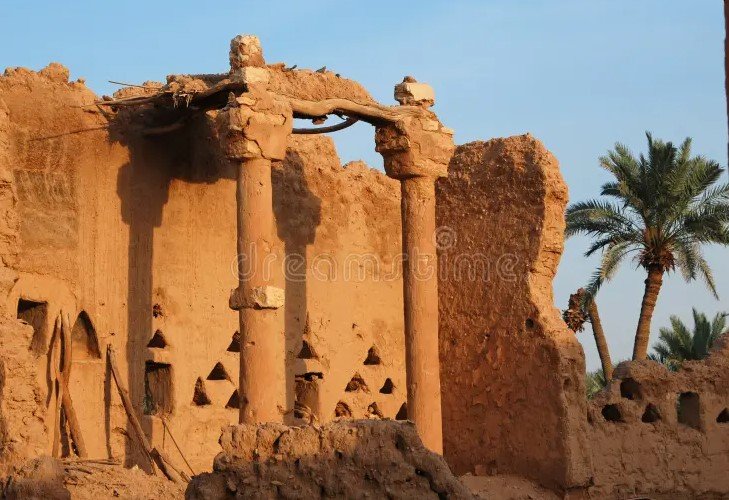Saudi Arabia’s Heritage Commission has revealed the discovery of 337 new archaeological sites around Riyadh through the Al-Yamama Archaeological Project. This major find, announced on October 21, 2025, sheds light on the region’s ancient history and boosts efforts to map the Kingdom’s cultural heritage.
Project Highlights and Key Finds
The Al-Yamama Project wrapped up its first phase with a detailed survey that uncovered these sites within a 100-kilometer radius of Riyadh. Teams documented 231 structures using advanced 3D photography and surveyed 148 more, while focusing on 70 sites for in-depth analysis.
These discoveries include ancient stone tool workshops, wells, dams, and circular stone buildings from various eras, including the early Islamic period. Experts say the sites reveal how early communities lived and built in the area.

The project ties into broader efforts in Saudi Arabia, where recent digs in places like Khaybar have found 4,400-year-old towns protected by massive walls. This Riyadh find adds to a growing list of revelations about the Arabian Peninsula’s past.
| Discovery Type | Number Found | Historical Period |
|---|---|---|
| Stone Tool Workshops | Over 50 | Prehistoric to Bronze Age |
| Water Facilities (Wells and Dams) | Around 40 | Ancient to Islamic Era |
| Circular Stone Structures | 100+ | Various Eras |
| Other Formations | Remaining | Early Islamic |
Goals of the Al-Yamama Initiative
Launched in September 2024, the Al-Yamama Archaeological Project aims to explore Riyadh and nearby spots like Wadi Hanifah until 2028. It focuses on updating the national archaeological map and preserving sites for future generations.
The initiative involves partnerships with local experts, universities, and international teams. It includes excavations in areas such as Dhurma, Al-Hani, and Al-Masane to uncover more about the region’s development.
This work supports Saudi Arabia’s push to highlight its history amid modern growth. Similar projects in regions like Baha have registered hundreds of new sites in 2025 alone, showing a nationwide drive to document heritage.
By studying these locations, researchers hope to connect Riyadh’s past to its role as a trade and cultural hub in ancient times.
Advanced Tools Driving the Discoveries
Teams used cutting-edge tech like geographic information systems and ground-penetrating radar to spot hidden sites without digging. Low-altitude aerial photos and artificial intelligence helped map the areas quickly and accurately.
Magnetic surveying picked up buried structures, while 3D modeling created digital records for study. These methods make the project efficient and less invasive.
In recent years, Saudi Arabia has ramped up such tech in archaeology. For instance, a 2025 find in NEOM used similar tools to reveal the peninsula’s oldest known settlement.
This approach not only speeds up discoveries but also protects fragile sites from damage.
Experts note that blending tech with fieldwork has led to over 1,500 new site registrations across the Kingdom in 2025, far outpacing earlier years.
Impact on Riyadh’s Historical Narrative
These 337 sites offer fresh insights into Riyadh’s evolution from ancient settlements to a modern capital. They show evidence of early human activity, trade routes, and water management that shaped the area.
Historians believe the finds could rewrite parts of local history, linking them to broader Arabian stories like rock art in Najran dating back to 5500 BC.
The discoveries highlight Riyadh’s untapped potential, with experts estimating thousands more sites remain hidden. This aligns with ongoing efforts to promote tourism and education about the Kingdom’s roots.
- Boosts cultural tourism by attracting visitors to new heritage spots.
- Enhances academic research through shared data with global institutions.
- Supports preservation laws to protect sites amid urban expansion.
Broader Implications for Saudi Heritage
The Al-Yamama Project fits into Saudi Arabia’s Vision 2030, which emphasizes cultural preservation alongside economic growth. It builds on successes like the registration of 184 sites in Baha and 85 in Tabuk this year.
Looking ahead, the project plans more excavations and public exhibits to share these finds. This could inspire similar initiatives in other provinces.
As discoveries continue, they remind us of the deep history beneath Saudi Arabia’s sands. The Heritage Commission urges ongoing support for such work to safeguard the nation’s legacy.
Share your thoughts on these ancient finds in the comments below, and spread the word by sharing this article with fellow history enthusiasts.
